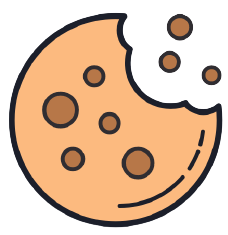IT’S NO SECRET THAT WE HAVE A SERIOUS ADDICTION. HERE’S HOW TO CUT BACK ON THE SWEET STUFF, ONCE AND FOR ALL.
You’re probably aware that your frothy coffee drink or bakery scone is loaded with sugar. But did you know that startling amounts of added sugar are also lurking in your breakfast cereal, dairy-free milk alternative and even takeout fried chicken?
Most people consume three times the recommended daily limit of sugar. And it’s not just a harmless habit. “The research has been very consistent and the findings quite convincing that eating too much sugar can lead to a wide range of adverse health effects.”
Even if you’ve gotten the message that too much sugar isn’t good for your health and are taking steps to cut back, like switching to ‘low-sugar’ baked goods and diet soda, you haven’t solved the issue — and you may have created a new problem.
Since the 1990s, aspartame has been widely used a sugar substitute in products such as diet drinks, yogurt and breakfast cereal. But the sweetener has come under scrutiny following a July 2023 statement from the International Agency for Research Cancer, a division of the World Health Organization, that officially classified aspartame as “possibly carcinogenic to humans.”
So what’s the answer? Ultimately, we need to rethink our relationship with the sweet stuff.
THE PROBLEM WITH SUGAR:
For the most part, the sugars that naturally occur in an apple, a sweet potato or a glass of milk aren’t an issue. It’s the sugar introduced during the manufacturing of a jarred-pasta sauce or the preparation of a muffin, or when you stir a spoonful of sugar into your coffee, for example, that’s harming your health.
When you eat or drink something with added sugar, your body breaks it down through your saliva, then the glucose gets absorbed into your bloodstream, spiking your blood sugar and triggering your pancreas to release insulin. On the other hand, when you munch on a bowl of fresh berries, the whole fruit contains fiber and other compounds that slow how quickly the sugar is digested, so your blood sugar doesn’t spike in the same way.
You’ve probably noticed some of the immediate unpleasant side effects of too much added sugar, which can range from headaches to brain fog, but it also takes a toll on our long-term health. Too much added sugar has been shown to have a tremendous negative effect on heart health.
“It can promote inflammation, which causes stress on blood vessels and on the heart itself.” Other effects include weight gain, obesity, fatter liver disease, tooth decay, and even some cancers. A large review of British Journal found 45 negative health effects of added sugar, which even included asthma and depression.
That’s why the US dietary guidelines suggest limiting calories from added sugar to less than 10 percent of your total calorie intake per day. And the American Heart Association recommends eating no more than 6 teaspoons (25 grams) of sugar per day for women, and 9 teaspoons (38 grams) for men. That’s roughly equivalent to one chocolate chip cookie and a low-fat yogurt.
That low thereshold is a shock to many people. ” I speak with adults on the verge of lifestyle diseases, such as diabetes or cardiovascular disease, who were never taught how to read a nutrition facts label.” Lots of people simply do not know how many hidden sugars they consume throughout the day.” And when they are told they need to cut back, they are at a loss about how to start.
SUBSTITUTES AREN’T THE SOLUTION:
In an effort to continue to eat the foods we enjoy while avoiding excess sugar, many have switched to alternative sweeteners and so-called ‘natural sugars.’ Maple syrup, jaggery, coconut sugar and honey may have the halo effect of a health food, but they’re really no better for us. It’s true that they do contain some minerals and vitamins, but they are not very different from table sugar and should also be used in moderation.”
Artificial sweeteners used to be recommended for people trying to lose weight or keep it off, but that practice, too, has recently come under scrutiny. The WHO advised against using artificial sweeteners as part of a weight-loss plan since they have not been found to reduce body fat in the long term.
“The data suggests that the use of these products has little impact on the obesity epidemic.” Consuming artificial sweeteners might even prompt us to eat more. Artificial sweeteners do have a place for people who have certain health conditions, such as diabetes. And the Food and Drug Administration maintains that aspartame is safe when consumed within its recommendations for an acceptable daily intake (ADI) of 50 milligrams per kilogram of body weight daily, To put it in perspective, a person weighing 70 kgs would need to drink more than 17 cans of diet soda in a day to exceed that limit. Even still, many health and nutrition experts recommend using caution.
Other sweeteners, such as sucralose may be problematic too. Past research has linked them to high blood pressure and cardiovascular disease. Plus we don’t know what the long-term effects of any artificial sweeteners will be on children.
Possible health effects aside, the other issue with leaning on artificially sweetened foods is that they still feed your sweet tooth. “As a society, our palates have been trained to hit that bliss point at every meal.” That is a big part of our problem.
WHY YOU’RE EATING MORE SUGAR THAN YOU THINK:
“If it tastes sweet, it has sugar in it.” Or it contains an artificial sweetener. The trickier piece of the puzzle is that even if something doesn’t taste sweet, it can still contain sweeteners. And if it comes from a coffee shop or fast-food restaurant, or if it has a label in it, such as sucrose, brown rice syrup or high fructose corn syrup.
“Sugar is added to mask the off-putting taste of some of the other ingredients like dyes and preservatives.” Sugar can also be added to extend the shelf life and enhance the texture of processed foods like peanut butter and hamburger buns. That’s why it’s found in many savoury processed foods that we don’t think of as inherently sweet.
WILL WE EAT LESS ADDED SUGAR IF IT COSTS MORE?:
Another place where sugar is hidden in plain sight in drinks, including juices, sodas, and smoothies. “Sugary beverages account for almost half of the added sugar in the US diet.”
More than 40 countries and cities around the world, including Finland, France and a number of US cities, have introduced a tax on sugar-sweetened beverages to discourage people from buying them. So far, it seems to be working.
Some experts advocate for a broader approach, including higher taxes on all products with added sugars, educational programs, limits on advertising to children and better product labelling. “Whatever we can do from a public health standpoint is positive.”
KICKING THE HABIT FOR GOOD:
Ultimately, we all need a total sweetness reset in everything that we consume. “What I advocate is making small changes to your behaviors and reducing the amount of sugar in your diet systematically.”
Doing this slowly, over time, is the best approach for avoiding withdrawal symptoms, which are very real. “Sugar has been compared to cocaine in some research studies.” And people who go cold turkey may experience headaches, nausea, irritability, anxiety, and intense cravings.”
The good news is that any side effects will wear off after a few days, and within a few weeks a person’s taste buds will be more sensitive to sweet flavors again. That means you won’t need to add as much sugar to y our tea, for example, to taste a kick of sweetness.
Follow these expert-approved tips to help get you on the right track:
DO AVOID PROCESSED FOODS: Research on ultra processed foods has linked everything from hot dogs, muffins, potato chips, and frozen entrees to negative health outcomes ranging from dementia to heart disease, and even premature death.
“Avoiding processed foods and choosing plant-based foods along with lean meats, poultry, fish, seafood, nuts, and dairy foods can reduce risk for obesity and chronic diseases while improving nutritional quality and health status.”
Ultra processed foods tend to be items that include 10 or more ingredients, often with some you can’t find in your kitchen and with names you may not recognize. Instead, opt for whole foods you can prepare at home.
DON’T UNDERESTIMATE THE POWER OF A SMART SWAP: You can substitute mashed banana or applesauce for sugar in many baking recipes, switch store-bought bottled salad dressing for a homemade version, and reach for sparkling water with a slice of lemon instead of a sugar-sweetened bottle lemonade, for example. If you get creative, the options are endless.
DO READ FOOD LABELS: It’s important to read ingredients lists and watch for often-used synonyms when you’re scanning a box of energy bars or breakfast cereal. “There are 50-plus names for sugar — and then there are artificial sweeteners.” It can get very confusing.
As a general rule, if it’s an ingredient that ends in ose, it’s sugar. And when you’re scanning the nutrition facts panel, a daily value (DV) of added sugar that is 5 percent or less is considered a low source of added sugars, while a DV of 20 percent or more is high.
Another tip: Be sure to read the entire label. Some products combine regular sugars and substitutes, and an artificial sweetener near the end of the ingredient list can go unnoticed.
DON’T AVOID EVERYTHING SWEET: Naturally occurring sugars in milk, fruits and vegetables such as sweet potatoes and carrots are nutritious and supportive of a well-rounded diet.
“I make a point of not demonizing sugar in general.” All this isn’t to say that you must vow to never again enjoy another slice of birthday cake or an ice-cold fountain drink at the movie theatre. Your goal doesn’t have to be going sugar-free.
“Maybe you just want to get to a point where you feel you are at a comfortable level of consumption — like you’re in control.”
But, over time, consuming less added sugar and sugar substitutes is bound to make your life a whole lot sweeter.





